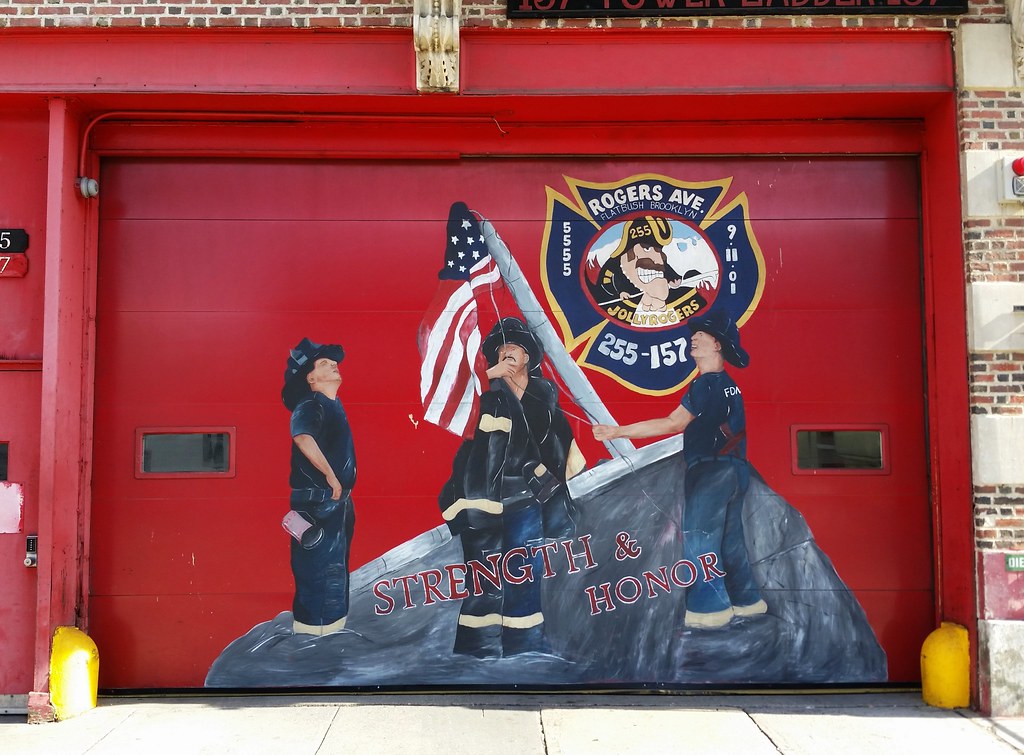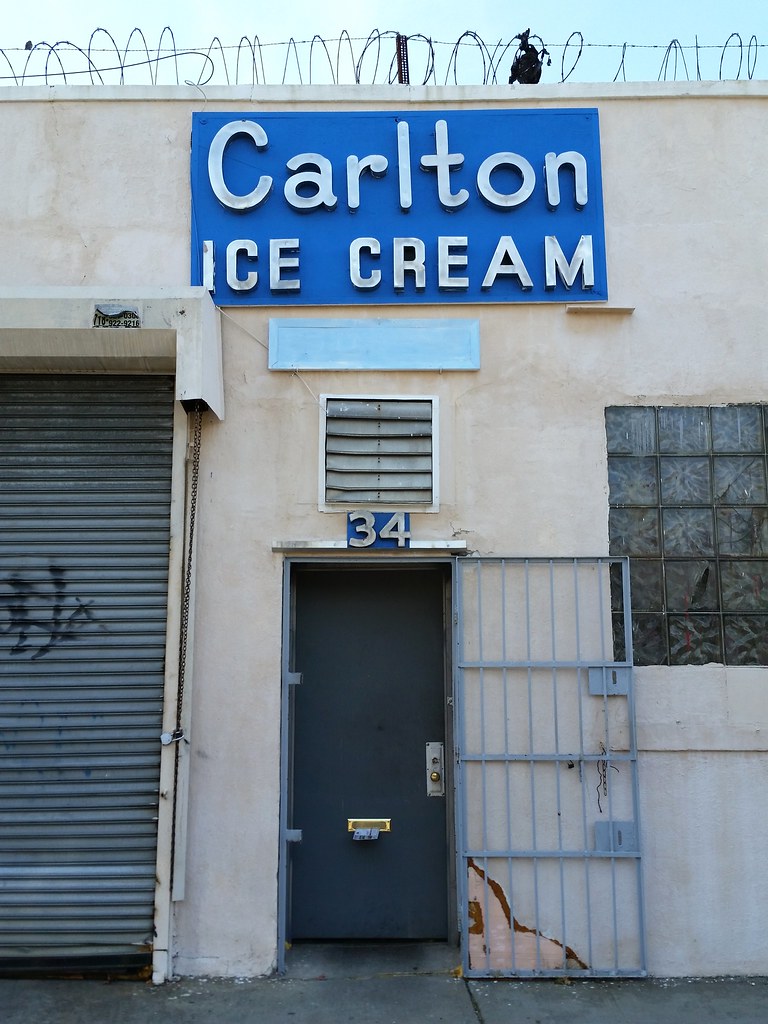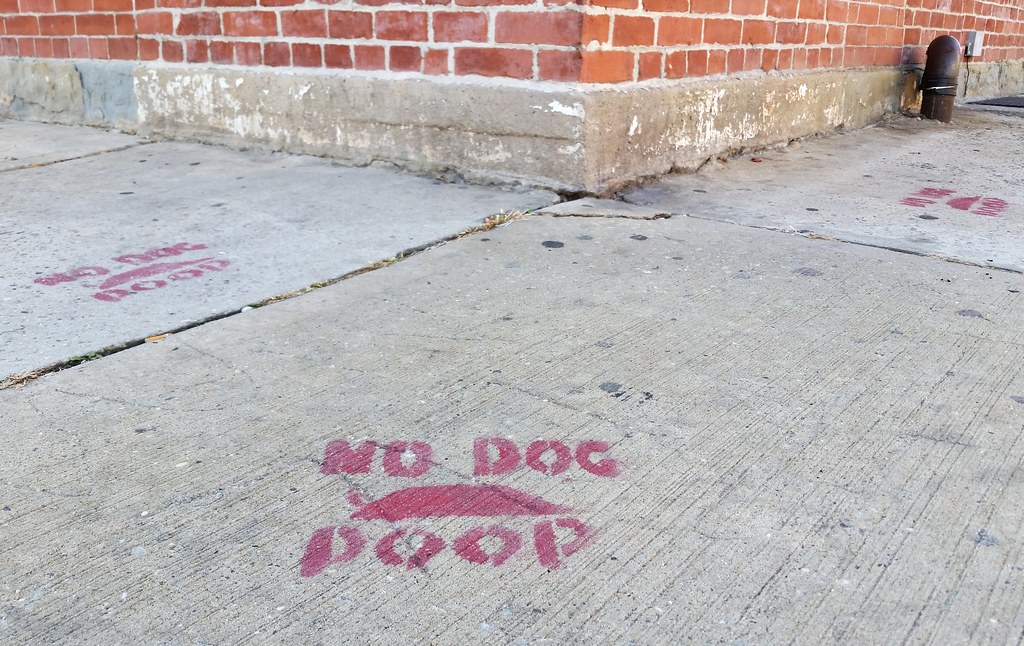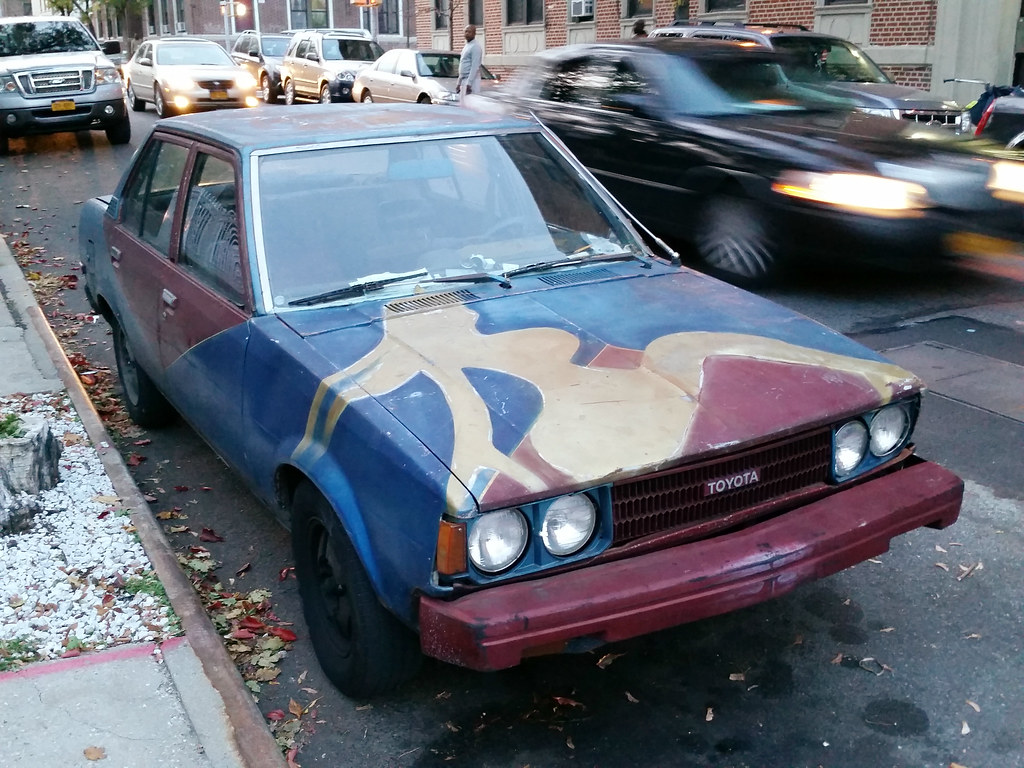

This tablet, a replica of a 4th-century B.C. stele (photo) that was discovered in Greece in 1932, bears the text of two oaths. The relevant one in this case is the Ephebic Oath, an ancient Athenian oath of citizenship that enjoyed a brief revival as a popular expression of civic virtue in 20th-century America. The oath has since largely fallen into obscurity again, but Brooklyn College still has its students recite this translation of it at graduation:
We will never bring disgrace to our city by any act of dishonesty or cowardice, nor ever desert our suffering comrades in the ranks; we will fight for the ideals and sacred things of the city, both alone and with many; we will revere and obey the city’s laws and do our best to incite a like respect and reverence in those about us who are prone to annul them and set them at naught; we will strive unceasingly to quicken the public’s sense of civic duty; and thus, in all these ways, we will strive to transmit this city not only not less, but greater, better, and more beautiful than it was transmitted to us.

I don't know if you can read the banners above, but Brooklyn College has been transformed into the fictional Townsend College for the TV show The Following.

but up in that light tower is a nest (closer look) belonging to the famed Brooklyn College flock of wild parakeets.

Located across the street from the "Wild Parrot Hot Spot" that is the Brooklyn College athletic field, this playground is appropriately decorated with parakeet silhouettes. (The zany name and animal art are clear signatures of former Parks Commissioner Henry Stern.)
P.S. Check out the crazy rules in effect here!
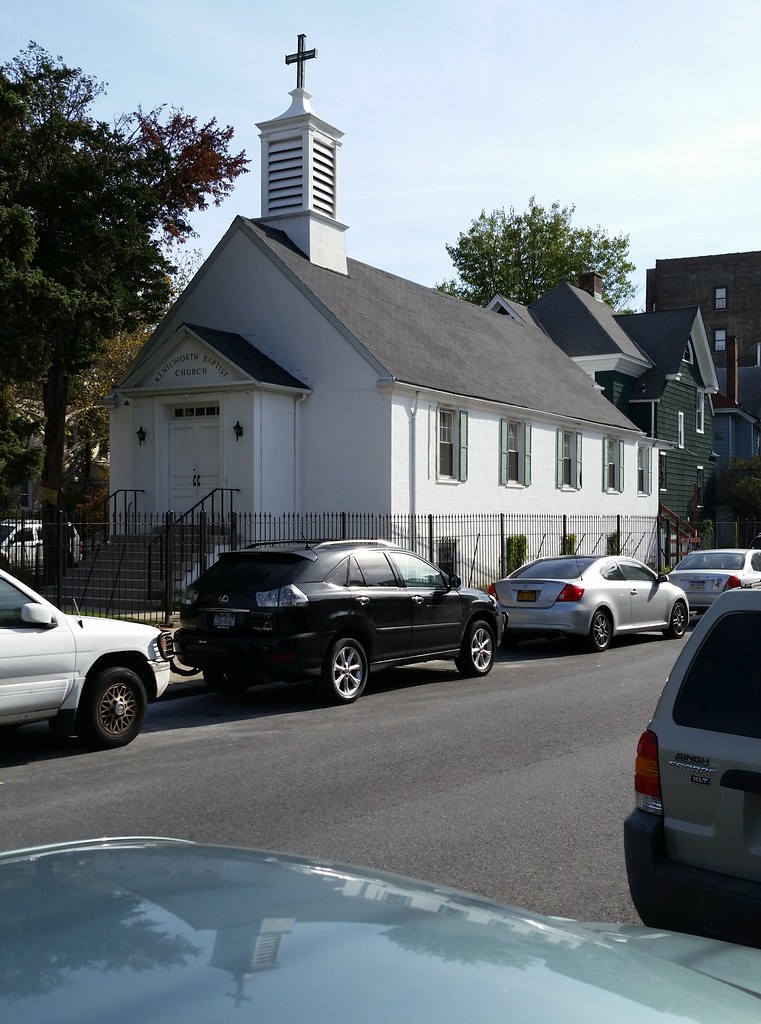
When this little church was dedicated in 1938, it didn't look much different than it does today.

The dawn redwood is often referred to as a "living fossil". In 1941, a Japanese paleobotanist identified a new genus of redwood in the fossil record. Once spread across large parts of the northern hemisphere, these trees appeared to have gone extinct. Within a few years, however, living specimens were discovered in central China. In the decades since, with seeds distributed around the globe, dawn redwoods have once again taken root in the US and elsewhere, and are now a popular street tree in New York. What seems to be the most well-known one in Brooklyn can be found on Willow Street in Brooklyn Heights (Street View).
(I'm no botanist, but I'm fairly certain the tree above is a dawn redwood. Here are closer looks at its foliage and its trunk.)
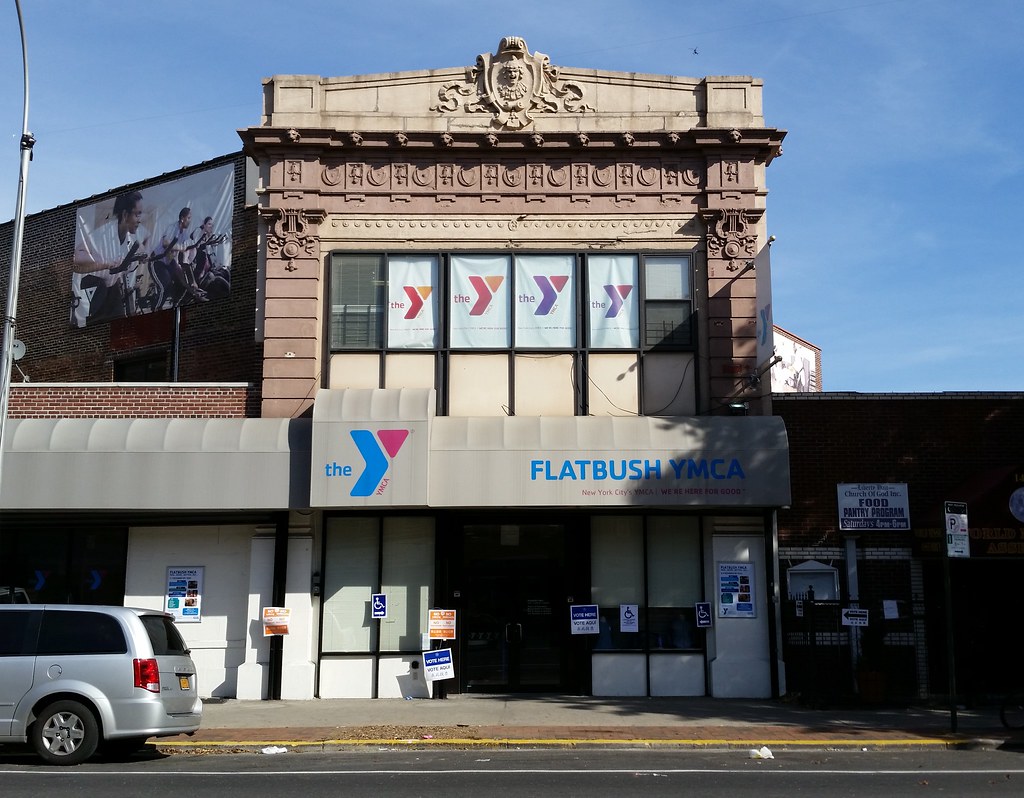
This theater (close-up) opened in 1920 and closed around 1959, after which it was converted into a short-lived bowling alley. You can see a couple of old photos of the place here.
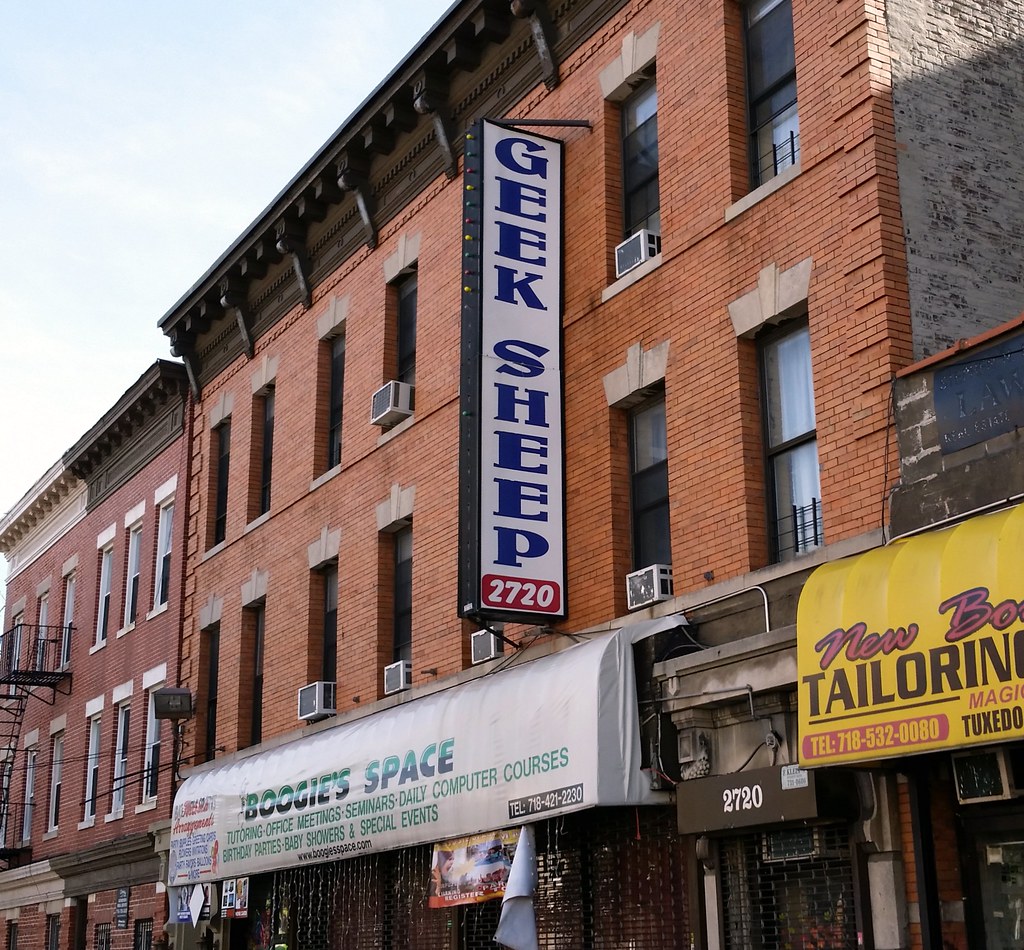
According to the internet, Geek Sheep is probably a livestock wholesaler, but could also possibly be a business coaching and consulting firm or a computer repair shop. I thrice tried calling them to ask, but to no avail. The first time, no one picked up and the outgoing message was just the sound of someone rustling papers in the background. The second time, there was about ten seconds of dead silence followed by a busy signal. And on my last attempt, the phone rang six times and then disconnected.

This store has been declared a city landmark since our last visit. Here's the full landmark report.

I have no idea what this place is/was, but it's looked the same since at least 2007.
"THOMPKINS" and "1989" are written in the sidewalk outside this building, the letters and numbers formed from stones embedded in the concrete. It turns out that the owner of this property from 1978 to 2013 was named Thompkins.

A lingering sign from the days when Gaines Motors occupied this building
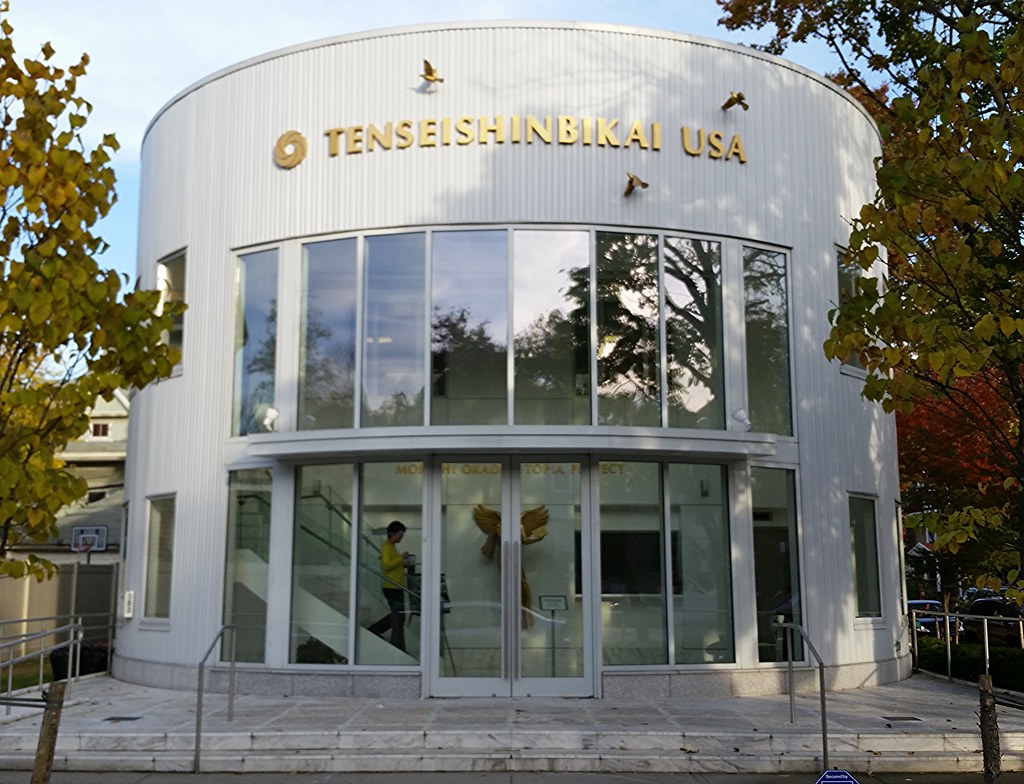
Incongruously sited amid the enormous old homes of South Midwood in Victorian Flatbush, this is the first Tenseishinbikai temple built in the United States. Tenseishinbikai is a Japanese "super-religion" whose teachings "specify precise and detailed means, methods, plans and designs to actualize Paradise on Earth. These teachings transcend and encompass all other religions . . . and are worthy of belief by the whole of humanity." You can read much more about Tenseishinbikai on its website — actually, you don't have to read at all, because after starting out with a performance of the "Organization Song", the site will speak aloud to you the full text of each page before automatically advancing to the next one.

Mokichi Okada was the founder of Tenseishinbikai and the developer of Johrei, which the Tenseishinbikai website describes as "the rational and advanced science of the future. Johrei is the method of radiating rays of spiritual light, the light of the fire element, towards the clouds in the spiritual body which are the very cause of disease and other sufferings. . . . Johrei is the sole method for saving people from the great purification action that will engulf the world."

Here's a photo from 1928, the year after this bank opened.

One of the metropolitan area's five "Wonder Theatres" opened by Loew's in 1929-30, the Kings went out of business in 1977 and had been deteriorating for years (interior, exterior) before its recent renovation. It had its grand reopening a few months after I walked by.
Check out these spectacular shots of the restored interior, and scroll down a bit in this NY Times article to view a set of gorgeous 360-degree panoramas, one from each of the five Wonder Theatres.

Like the former Ward bakery in the Bronx, this building has been converted into a self-storage facility.
As we learned when we passed by the Snyder Avenue side of this bakery complex a while back, Ebinger's was a Brooklyn institution most famous for its beloved blackout cake, but also had a long history of racial and religious discrimination.


